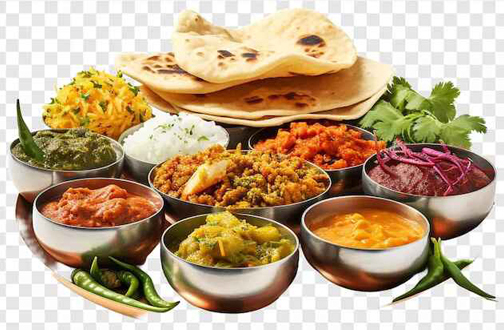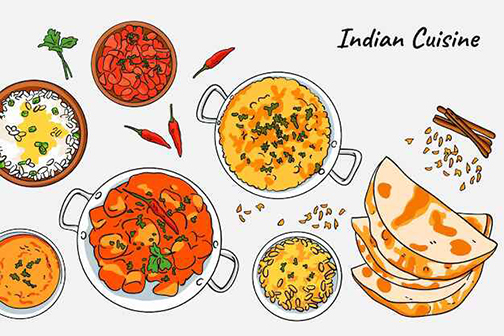| The Spice Route: Evolution of Indian Restaurants and Takeaways in the UK | |
| Introduction: Over the past few decades, Indian restaurants and takeaways have woven themselves into the very fabric of the UK’s dining scene. From the bustling streets of London to the quiet corners of Annfield Plain and Stanley, the evolution of these eateries has been shaped by a variety of cultural and economic influences. This article explores how Indian cuisine has grown and transformed, impacting both culinary and cultural landscapes across the UK. | |
 |
|
The Early Days of Indian Cuisine in the UKPost-War Introduction• First Wave: The introduction of Indian cuisine to the British Isles began in earnest after World War II, spearheaded by immigrants from India, Bangladesh, and Pakistan.• Initial Offerings: Early Indian restaurants catered mainly to Indian expatriates, offering traditional dishes that were largely unknown to the British public. Cultural Integration• Adaptation to Local Tastes: Over time, restaurateurs began to adapt their menus to suit British tastes, leading to the creation of now-iconic dishes such as chicken tikka masala.• Growth in Popularity: By the 1970s, Indian food had begun to captivate a broader audience, setting the stage for a nationwide culinary phenomenon. Expansion and Mainstream AcceptanceRise of the High Street Curry House• Proliferation: The 1980s saw a rapid increase in the number of Indian restaurants, with almost every town and city hosting its own "curry house."• Menu Standardization: Menus began to standardize somewhat across the country, with dishes like korma, madras, and vindaloo becoming household names. Integration into British Culture
• Culinary Mainstay: Indian cuisine became an integral part of British dining, enjoyed by a wide range of demographics. • Cultural Recognition: The popularity of Indian restaurants helped to enhance multicultural understanding and acceptance. 
Modern Innovations and TrendsThe Rise of Indian Takeaway and Home Delivery• Convenience Culture: The late 1990s and early 2000s saw a surge in the popularity of Indian takeaway and home delivery, fueled by the growing demand for convenience.• Technology Integration: Online ordering systems and apps, such as those promoting Indian food delivery in Stanley, have made it easier than ever to enjoy Indian cuisine at home. Culinary Evolution• Regional Diversification: More recent years have witnessed a trend towards regional specialization, with restaurants now offering dishes from specific parts of India, such as Goan or Chettinad cuisine.• Health and Sustainability: Contemporary Indian eateries are also embracing global trends towards health-conscious eating and sustainability, incorporating organic ingredients and vegan options into their menus. Influences Driving ChangesEconomic Factors• Market Demand: As the British public's palate has become more adventurous, demand for authentic and diverse Indian dishes has grown.• Competitive Landscape: The need to stand out in a crowded market has driven innovation and quality improvement. Cultural Dynamics
• Globalization: Increased travel and exposure to global cultures have raised expectations for authenticity and variety in ethnic cuisine. • Cultural Exchange: The ongoing cultural exchange between the UK and India has enriched the culinary scene, making it more vibrant and diverse. ConclusionIndian restaurants and takeaways have not only survived but thrived in the UK, evolving from niche eateries to mainstream culinary giants. They have adapted to changes in consumer preferences and economic conditions, continuously innovating and improving their offerings. From the best Indian food in Stanley to the most convenient Indian takeaway delivery in Annfield Plain, these establishments have become a beloved part of the UK's culinary culture. As they continue to evolve, they promise to keep adding spice and variety to the lives of their British patrons.This comprehensive look at the evolution of Indian cuisine in the UK highlights the significant cultural and economic influences that have shaped its journey, reflecting a dynamic fusion of tradition and modernity. FAQ: Evolution of Indian Restaurants and Takeaways in the UK1. When did Indian cuisine first become popular in the UK?• Indian cuisine began gaining popularity in the UK after World War II, primarily introduced by immigrants from India, Bangladesh, and Pakistan. The real surge in popularity happened during the 1970s as it started to integrate into British culture.2. What changes have occurred in the menus of Indian restaurants over the years?• Initially, Indian restaurants in the UK catered mainly to Indian expatriates with traditional dishes. Over time, to appeal to British tastes, menus evolved to include milder spices and fusion dishes like chicken tikka masala. Recently, there has been a trend towards regional specialization and healthier, sustainable options.3. How did Indian takeaways become popular in the UK?• The popularity of Indian takeaways in the UK surged in the late 1990s and early 2000s, driven by the growing demand for convenience. The advent of online ordering systems and delivery apps further boosted the popularity of Indian takeaway and home delivery services.4. What are some key innovations in the Indian restaurant industry in the UK?• Key innovations include the adoption of online ordering and delivery apps, the introduction of regional dishes from specific parts of India, and a shift towards incorporating organic and vegan options to cater to health-conscious consumers.5. How have economic factors influenced the evolution of Indian restaurants in the UK?• Economic influences include the need to differentiate in a competitive market, which has led to higher quality and more innovative offerings. Changing consumer demands for authenticity and variety have also driven restaurants to diversify their menus.6. How has cultural exchange impacted Indian restaurants in the UK?• Increased globalization and cultural exchange have raised customer expectations for authenticity and variety, prompting Indian restaurants to offer more diverse and region-specific menus. This exchange has enriched the UK's culinary scene, making it more vibrant and diverse.7. What role does technology play in the modern Indian restaurant and takeaway industry?• Technology plays a crucial role by enabling easier access to Indian food through online ordering and delivery apps, enhancing customer convenience and expanding the market reach of restaurants.8. What future trends are expected in the Indian restaurant sector in the UK?• Future trends may include further exploration of regional Indian cuisines, increased emphasis on sustainable and eco-friendly practices, and continued innovation in menu offerings to meet the evolving dietary preferences of the UK population.These FAQs provide a detailed overview of the historical and modern developments in the Indian restaurant and takeaway industry in the UK, highlighting how they have adapted and thrived in a changing cultural and economic landscape. |
|
 |
|
